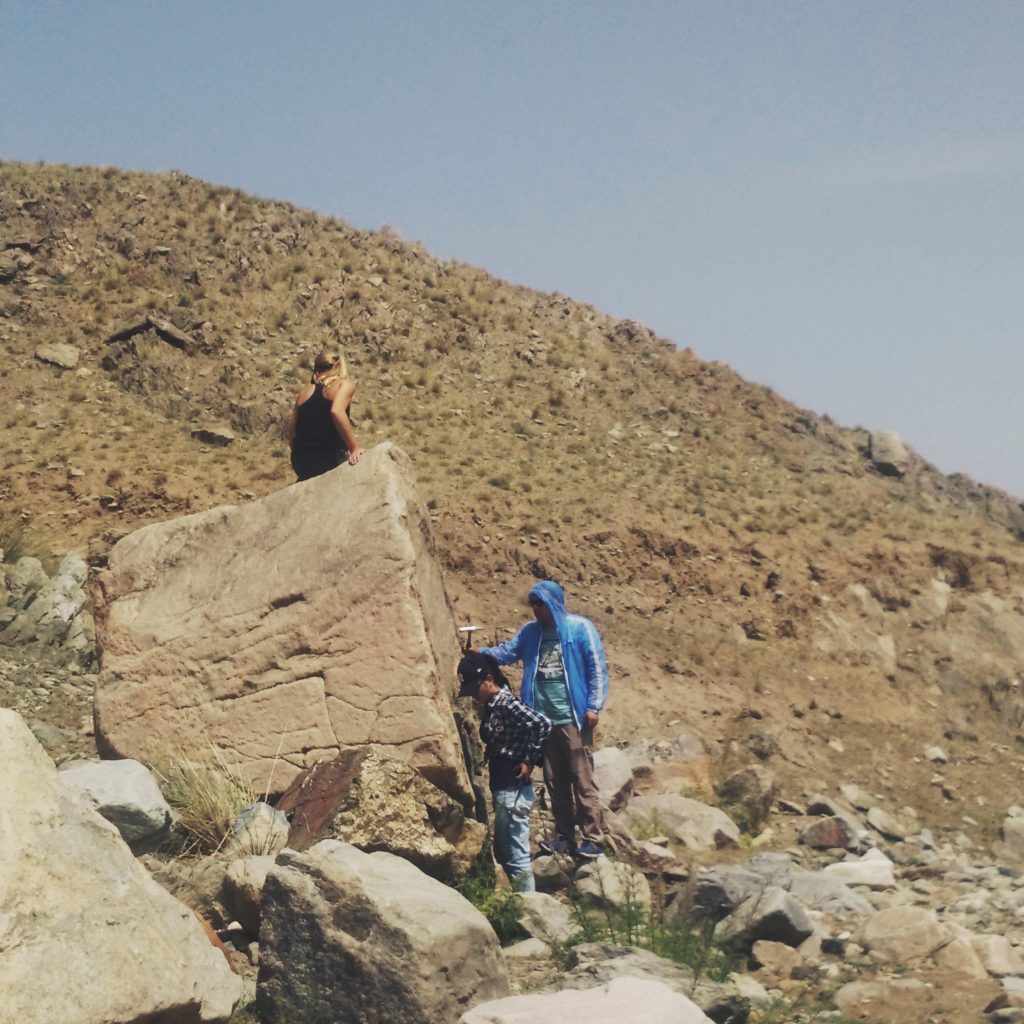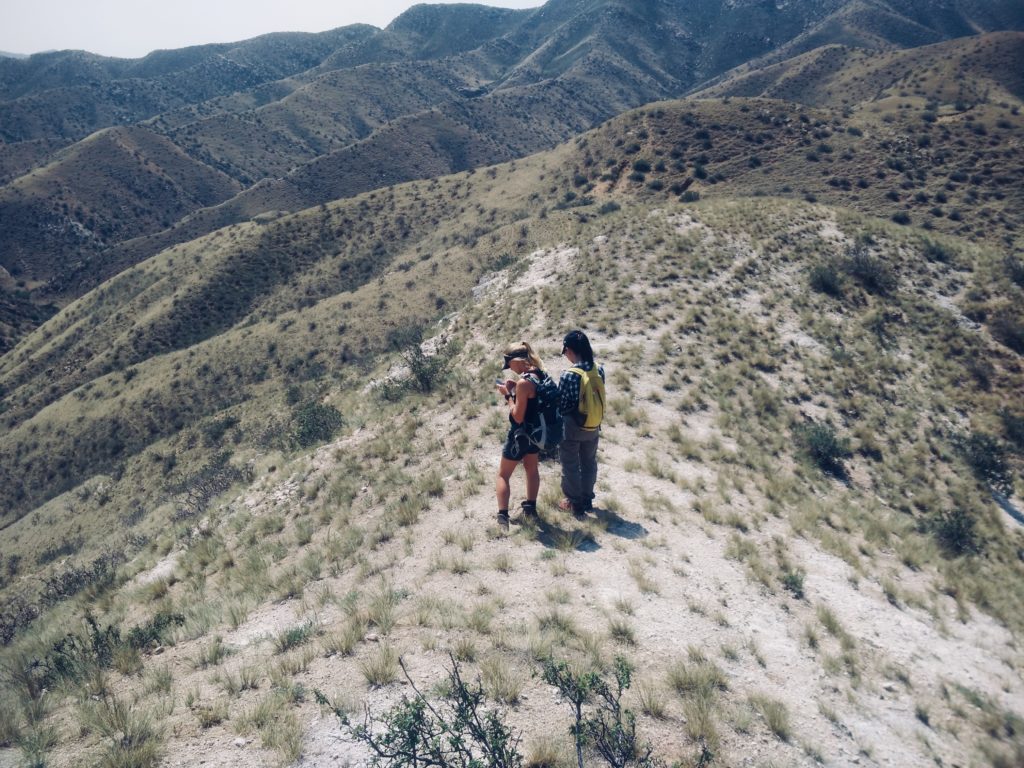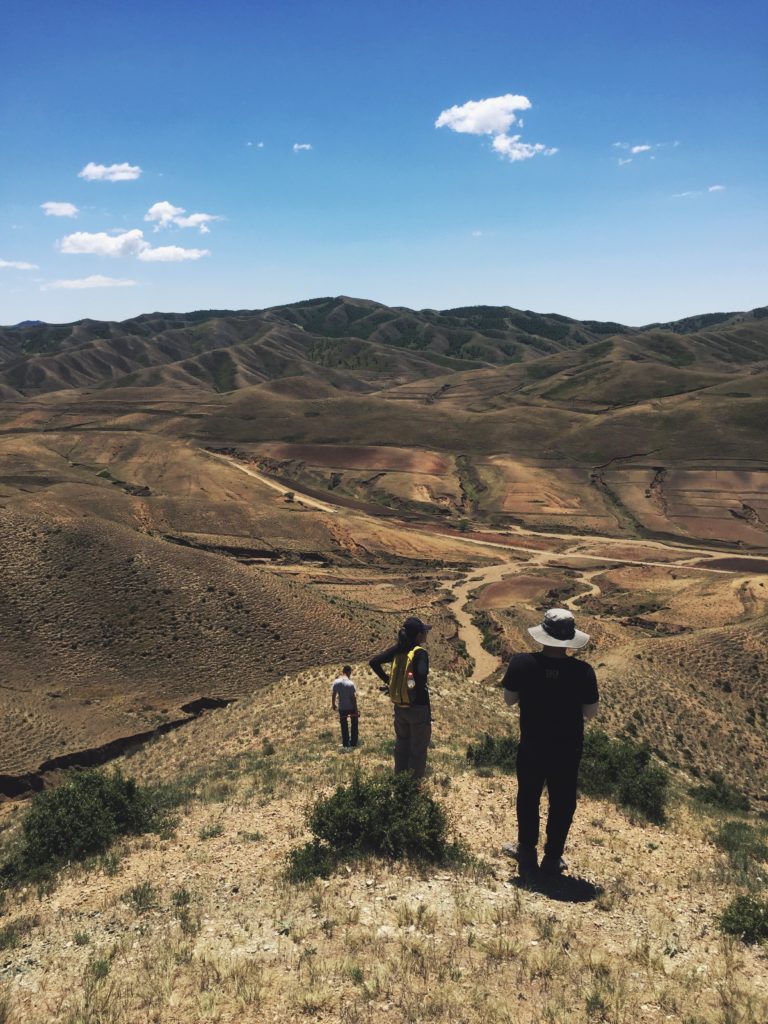Janne is a PhD candidate at Curtin University working with Chris Spencer and Chris Kirkland studying the interaction between the atmosphere and lithosphere during the Archean/Paleoproterozoic boundary. Janne completed her Bachelor and Master of Science degrees at Freie Universität of Berlin.
The early Earth was a very different world to what we know today. With an atmosphere, that was mostly devoid of oxygen and mainly consisted of volcanic gases, Earth used to provide a rather hostile environment for most forms of life that inhabit our planet today. The young Earth was likely cloaked by a thick haze cloud leading to a pale orange sky colour, similar to Saturn’s moon Titan. Instead of the large cohesive continental landmasses that characterize the surface of the modern Earth, the planet was covered by a global ocean with small scattered islands. It was not until the beginning of the Proterozoic eon (2.5 billion years ago, so nearly half of the age of the Earth) that our home planet went through a number of dramatic changes and began to show the more hospitable face that we are familiar with. For the last decades, geologists have been reporting on manifold observations which are pointing to these changes, including the build-up of oxygen in the Earth’s atmosphere. Yet the reasons are not well understood. Was the rise of free oxygen purely caused by the emergence of photosynthesis? But how does that fit together with biomarkers (indicators for the presence of living organisms) of cyanobacteria that predate atmospheric oxygenation hundreds of millions of years? Was it a driven by a geologic process that changed the composition of volcanic gases which were released into the atmosphere and did the same process ultimately lead to the formation of Earth’s first supercontinent (the clustering of most or all continents)?

Peter Sawyer’s impression of the Archean Earth. Note the stromatolites in the shallow water formed by layers of cyanobacteria.
In search of answers to these questions, we have set forth on a field trip into the vast landscape of Inner Mongolia, a northern province of China. The local rock formations form part of one of the oldest cratons (an old, stable block of the Earth’s lithosphere) in the world and hence, are exactly what we were looking for. One major difference between fieldwork in China and areas that I have worked in before is, that it is very hard to get access to geologic maps. As such, we had to completely rely on map fragments in published scientific papers. Fortunately, the sparse Inner Mongolian vegetation covers the underlying rock units only scantly and satellite images have proven to be very useful in our hunt for rewarding outcrops. A typical morning would begin with breakfast in a diner, during which we scrutinize satellite photos and scheme a plan for the day while the place owners were taking photos of Chris and me (the alien looking foreigners of the group).
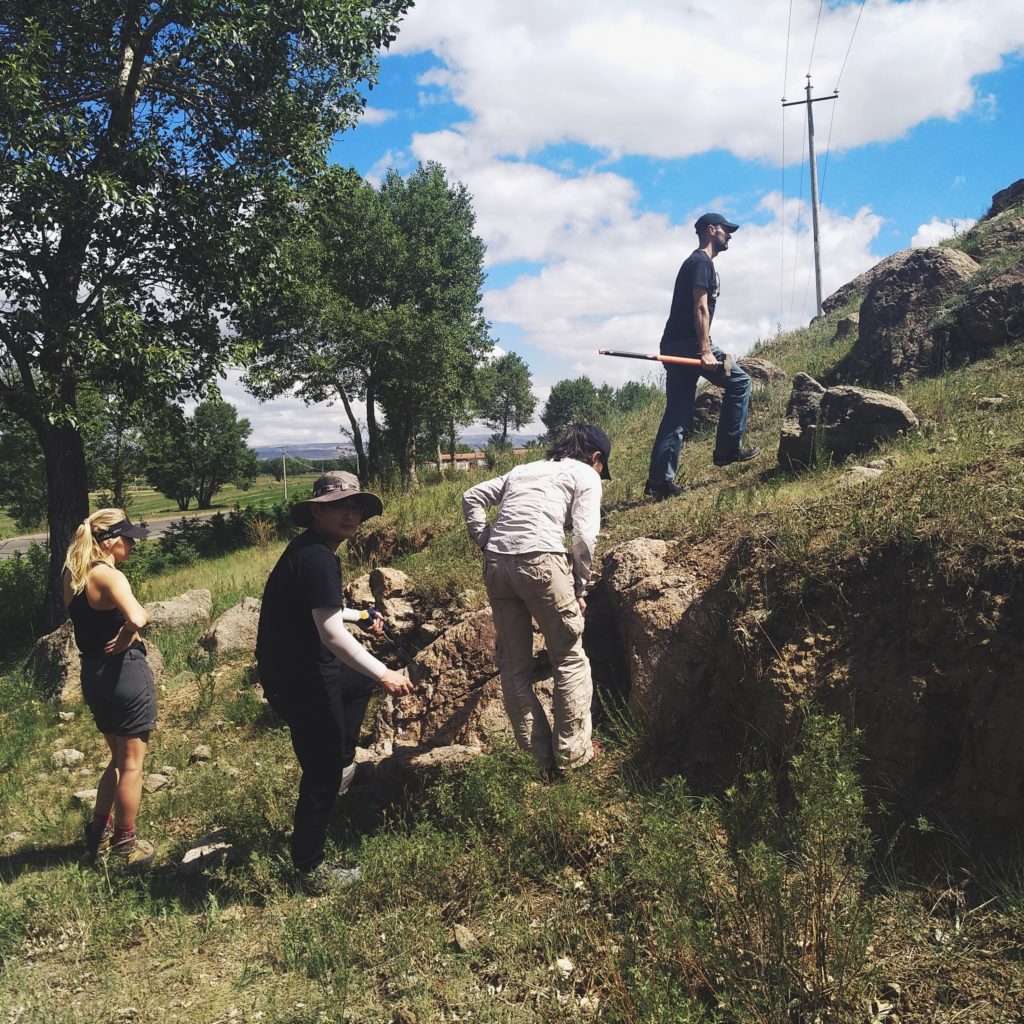
Our group in action.
Cun Zhang, 2nd from the left. PhD student at the Chinese University of Geosciences Beijing. Expert in gemology, who never got tired of making sacrifices for the group like endless hiking in the hills on the hunt for good outcrops and carrying the heaviest samples. He could even be convinced of joining our horseback ride in the grasslands (first time in his life that he sat on a horse and the Mongolian saddles are very hard!).
Xiaofang He, 3rd from the left. PhD student at the Chinese University of Geosciences Beijing. Not only an expert in petrology, organizational talent, and the best field company one can possibly imagine, beyond that we would have been completely lost in translation without her.
Chris Spencer, 1st from the right. Research fellow at Curtin University, Perth. One of the most passionate geologists I know with impressively extensive knowledge not only in geochemistry and tectonics but literally everything. Without him, this trip and the entire project would not be possible.
And I, 1st from the left.

Simply spoken, today, the movement of the crustal plates of the Earth causes formation as well as destruction of mountain belts. Eroded material from mountain belts is deposited as lose sediment and ultimately gets recycled in the deeper Earth, where it can melt and solidify to form a new rock. A concept in geology that is known as ‘the rock cycle’. One rock type that can be formed by such a process is granite. These types of granite preserve a snap shot of the rock cycle billions of years ago, and therefore are our object of research. The abundance of garnet (the red mineral in the photo) is an indicator for a granite derived by partial melting of sediments.
One of our most promising samples was found close to the Bayan Obo Mine District, the largest rare-earth element deposit yet found. The dust-shrouded atmosphere of the nearby mining town Baotou in combination with the fruit dealers at the roadside, all of them offering payment via smartphone, strongly reminded me of scenes of the science fiction movie ‘Blade Runner’. While we were studying the outcrops at the road that connects the mine with the town, big trucks passed us minutely leaving us in a cloud of grey dust. The drivers curiously watched us getting excited about our great find and dragging big chunks of rocks into our car. The samples that we collected from this outcrop contain the mineral pyrite, which allows us to draw conclusions about the atmospheric oxygen level, and hence are of particular interest for our research. We celebrated our successful field day with a delicious traditional Chinese hot pot dinner in the evening.
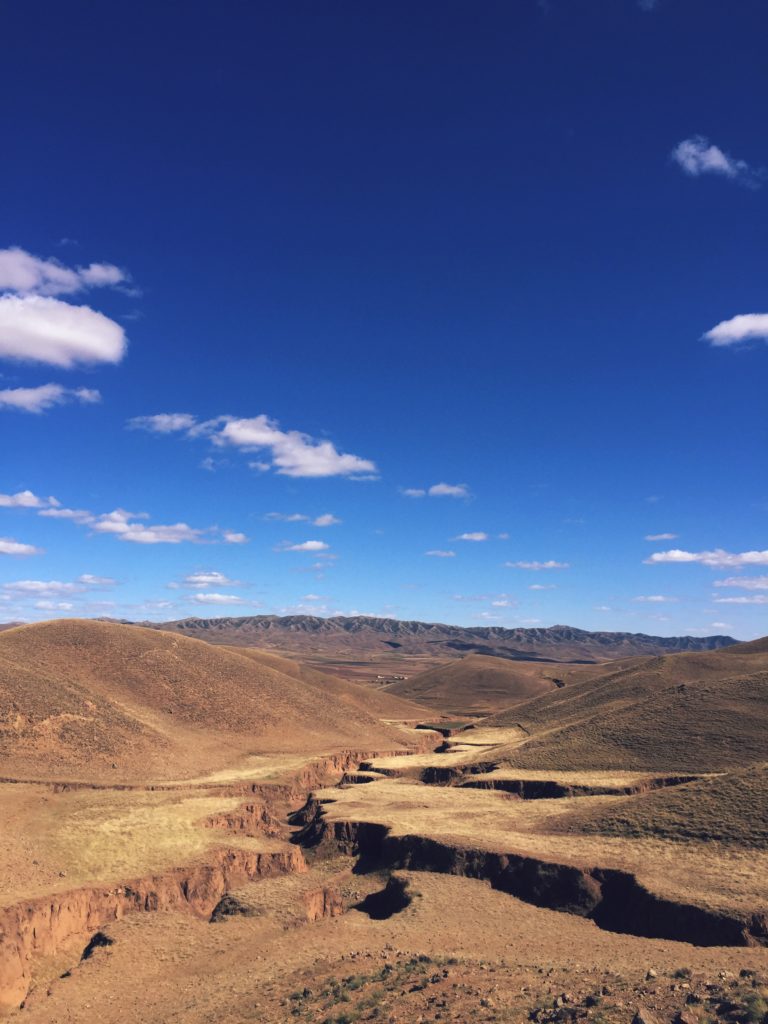
More than once, the hike to the summit was rewarding – in geologic aspects, but also in regards to spectacular views on the incredibly vast and beautiful landscape.
After a week in the field, I am now typing this article while we are on the car ride back to Beijing. The trunk is filled with plenty of sample material which age span over 500 million years of the Earth’s history. It remains to be seen whether it will bring us closer to the answer of the question: why and when did planet Earth become the pale blue dot that we know today?
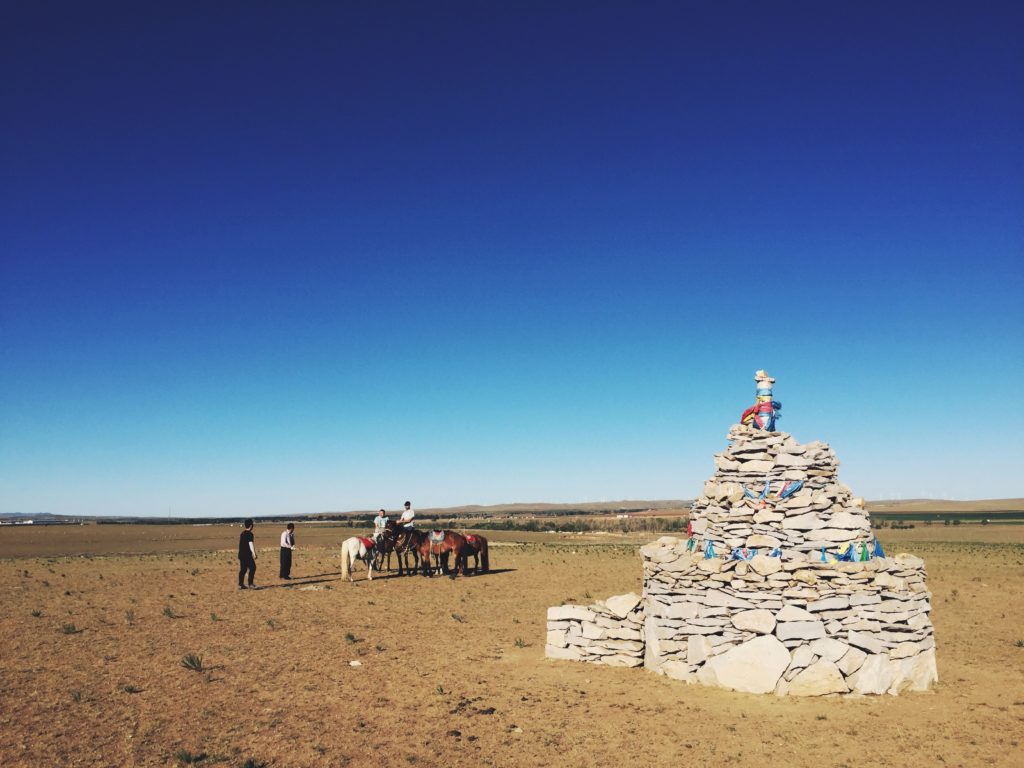
We did not want to miss out on the opportunity of horseback riding in the Inner Mongolian grasslands. While the breed of the Mongol horse is purported to be unchanged since the time of Genghis Khan, the name-giving certainly did: the fastest horse of the group was named ‘Little Mercedes’.
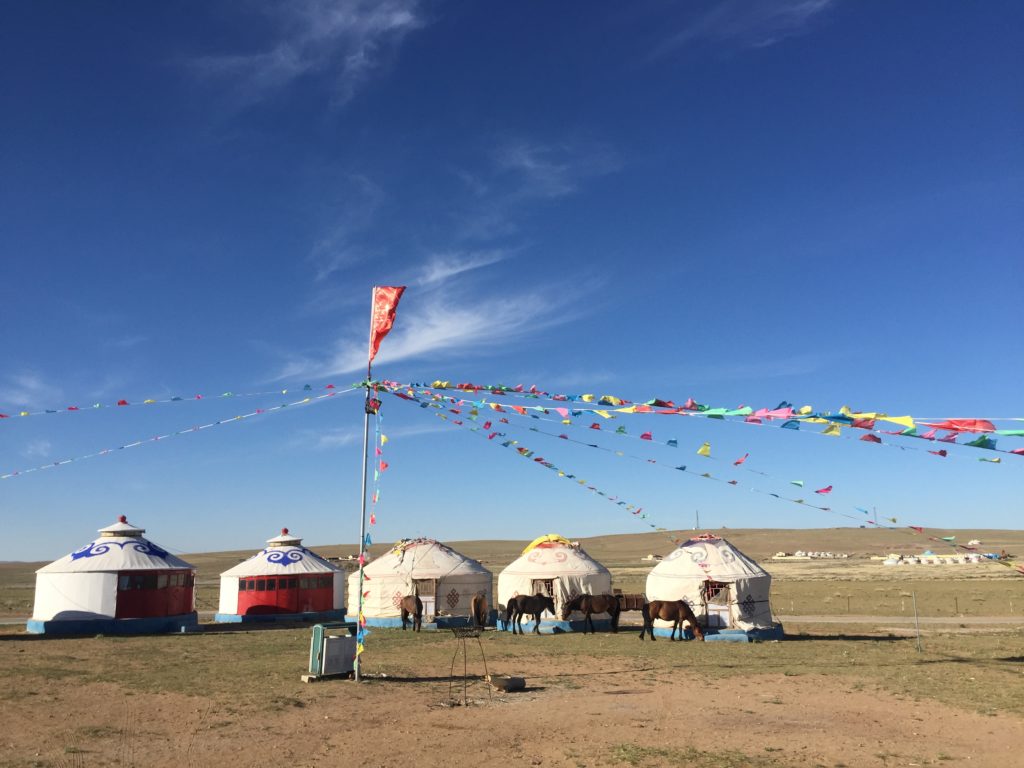
My absolute favourite accommodation during the trip: the Mongolian yurt. The host served some excellent Mongolian dishes and invited us for a fire party and karaoke.

Chinese hot pot dinner. A potpourri of food is cooked in a pot with boiling broth in the middle of the table.
![]() This work is licensed under a Creative Commons Attribution-NonCommercial-ShareAlike 4.0 International License.
This work is licensed under a Creative Commons Attribution-NonCommercial-ShareAlike 4.0 International License.

